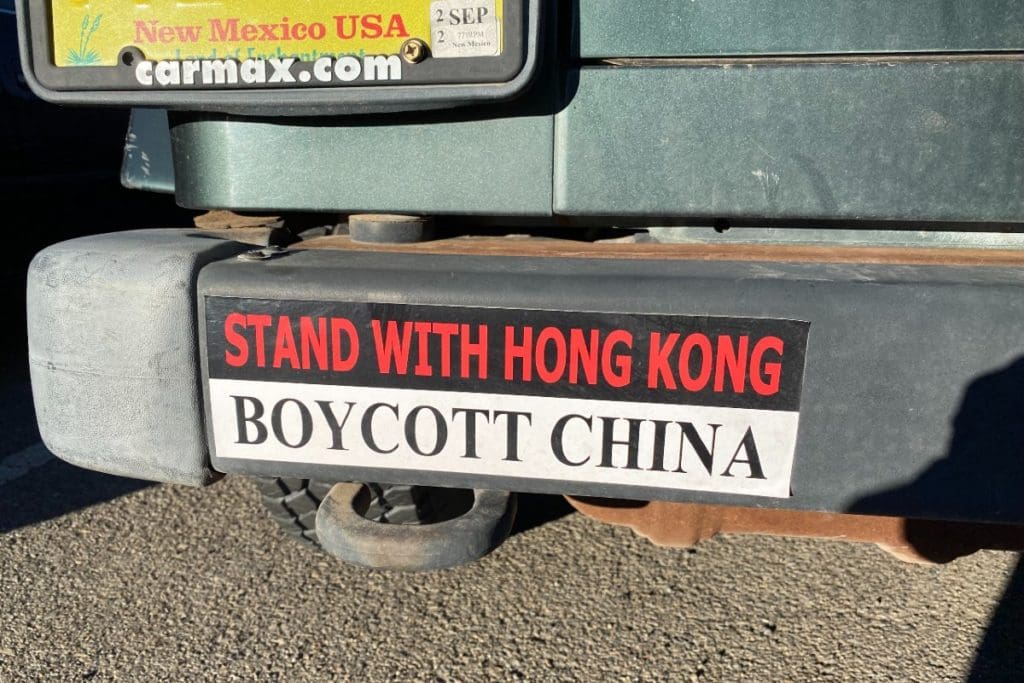Letter from America – How Will We Fare in These Uncertain Times?

Santa Fe, New Mexico
If there is one word to define the state of America’s bicycle industry, at least at the moment, it would be ‘uncertainty’.
But one expert who has lived through the many boom-and-bust cycles that have defined the bicycle business for decades is certain about one thing.
“Another bicycle boom is wishful thinking,” said Jay Townley, a long time industry consultant who cut his teeth in the business as Schwinn’s Vice President of Purchasing in the 1980s.
I tend to think Townley’s right, barring an explosive return of COVID-19 or some new Black Swan event that no one foresees. And from Townley’s perspective the current pop in U.S. gasoline prices is highly unlikely to drive consumers to buy more bikes either from brick-and-mortar outlets or online. America, after all, is not a bicycle commuter nation.
Why no boom? Several reasons: U.S. consumers, enraged over Russia’s invasion of Ukraine, are paying more at the pump with less grumbling than some would have predicted. You can only blame Joe Biden for so much!
Depending on which index is tracked, the average price per gallon of regular (March 16) is US$4.31 (A$1.52 per litre). A month ago it was US$3.51 (A$1.23 per litre)—an 18 percent increase. (I’m using the American Automobile Association index, better known as AAA.) Editor’s note: USA petrol prices are always lower than Australian prices because they have lower fuel taxes.
Consumers are also feeling the knock-on effect of inflation. The Federal Reserve raised interest rates a quarter point with more raises in the offing. Volatility defines the stock market. Higher mortgage rates could cool the hot housing market. Food prices are up and higher fossil fuel costs to power homes and apartments is putting a major dent in consumers’ open-to-buy budgets. The Wall Street Journal recently quoted a man in New York who said he was putting off his purchase of a new Tesla given the current high cost of electricity.
In other words, a lot is going on in the American economy—some of it good—with unemployment at 3.8 percent and wages increasing around 6 percent on an annual basis.
But a more targeted assessment for the bicycle industry is that the market for new bikes in the U.S. has been saturated thanks to booming sales beginning in mid-2020 as the first worldwide COVID lockdown took hold, and then through most of 2021.
That burst in sales rivals or surpasses the bike boom years of the early 1970s. Baby Boomers adopting the bike as a counter cultural totem drove that surge. And that was soon followed by gasoline shortages driven by OPEC’s decision to shut off the oil spigot during the Yom Kippur war.
So the U.S. market could be set to ‘normalize’ returning to a pattern of sales more akin to 2017 and 2018 when sales through the dealer market were roughly three million units.
Admittedly, a lot has changed since then as more sales are direct-to-consumer (DTC), which makes it much tougher to keep tabs on unit sales of dealer-quality bikes. Still, there are indications that inventory levels are high as the U.S. moves into spring.
And right now there are thousands of units on the water heading to ports on the East and West Coast. And rumblings out of Taiwan in the wake of the Taipei Cycle Show is that some brands are cutting back or cancelling orders as they re-forecast sales for the remainder of 2022 and early 2023. No one wants to be caught with excess inventory.
Something is afoot when Specialized sends out a consumer email touting it’s time to ‘Gear Up for Spring and Roll Out the Savings’ campaign. The Morgan Hill, Calif., company is promising a 25 percent discount on products which include its popular line of excellent e-mountain bikes.
Now could be the time to order that Turbo SL Expert Carbon, originally priced at $10,500 (A$14,000), at a much more modest $7,875 (A$10,500) with free shipping if ordered online.
On another front, for all practical purposes U.S. brands have closed operations in Russia as sanctions have essentially shut down banks and credit facilities. While unit sales of bicycles in Russia were steady, Russia, pre-invasion, was no Western Europe in terms of demand. Still, brands have to recalculate unit volume for an uncertain and perhaps dead market.
Another factor, and I would put it in the crystal ball category as it pertains to the U.S. bicycle market, could be a slow-burn backlash to goods made in China. Americans have paid attention to Hong Kong and they don’t like China’s clampdown. Chinese sabre rattling over Taiwan, coupled with China’s relationship with Russia, has hastened new public and congressional support for the island of Taiwan. And the Biden Administration is keeping the Trump tariffs mostly intact.
But if China were to aggressively side with Russia over Ukraine, new sanctions could make it difficult to get the low- to mid-level units the U.S. imports from China. Last year the U.S. imported 16,754,828 bikes from China, according to the U.S. Commerce Department.
And keep an eye on Trek, Specialized and Giant. All three have sizable retail investments in China and in addition Giant has a number of factories there. And, of course, China has locked up millions of its citizens in the last few days in its increasingly bizarre efforts to contain a new strain of COVID. That will further disrupt the supply chain for all sorts of goods including bicycles and components.
In today’s world, at this particular moment in time, uncertainty is a fact. And there is no escape from that uncertainty in the bicycle industry.
